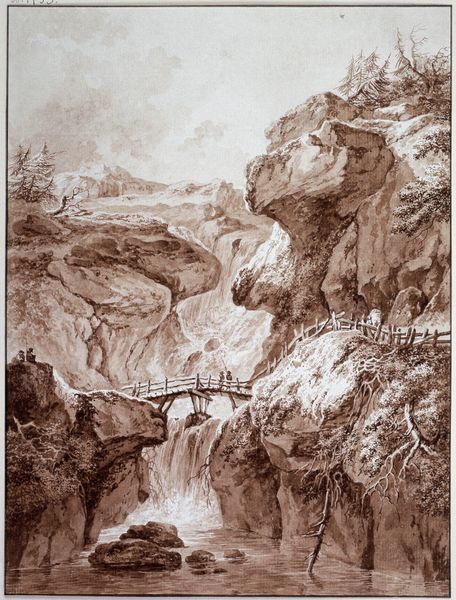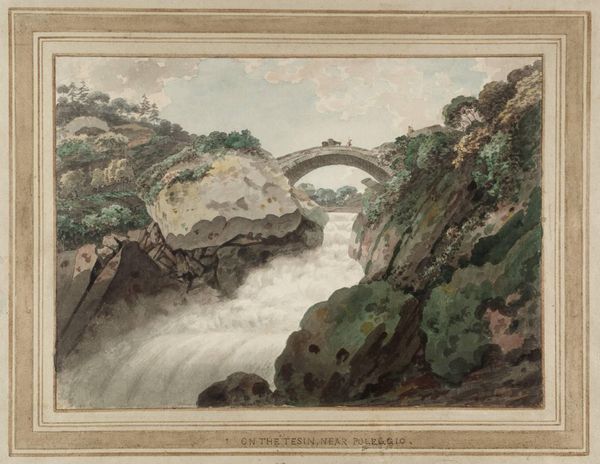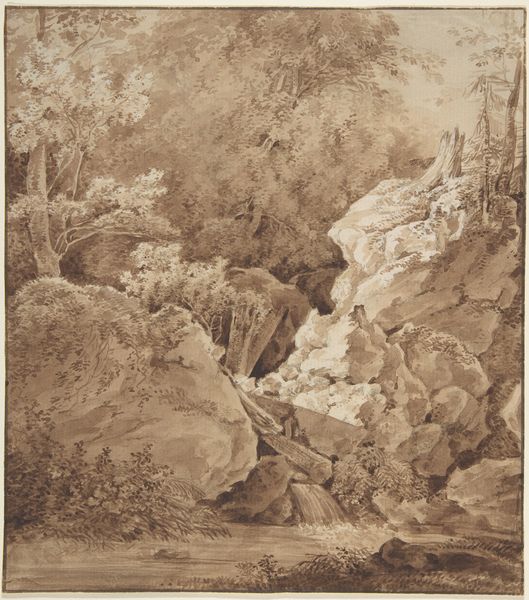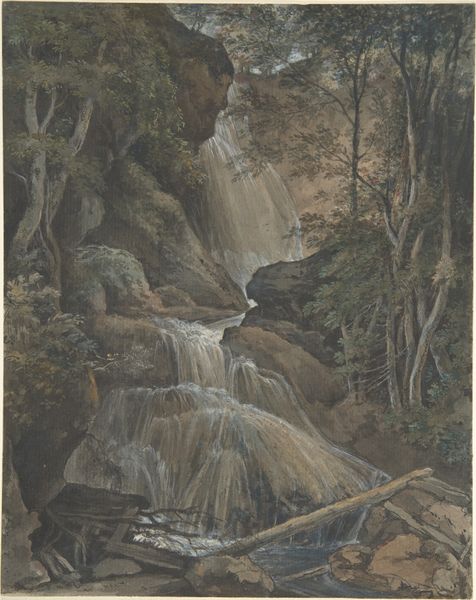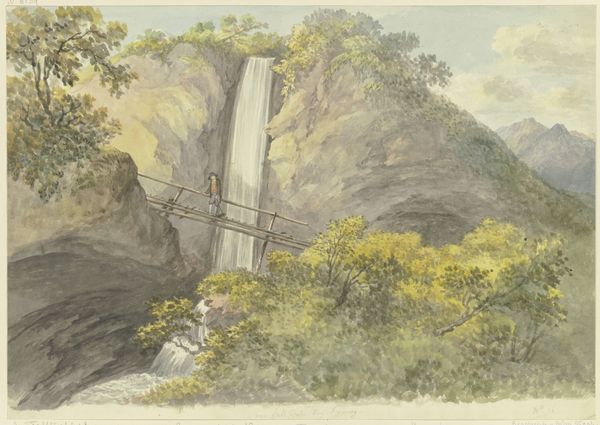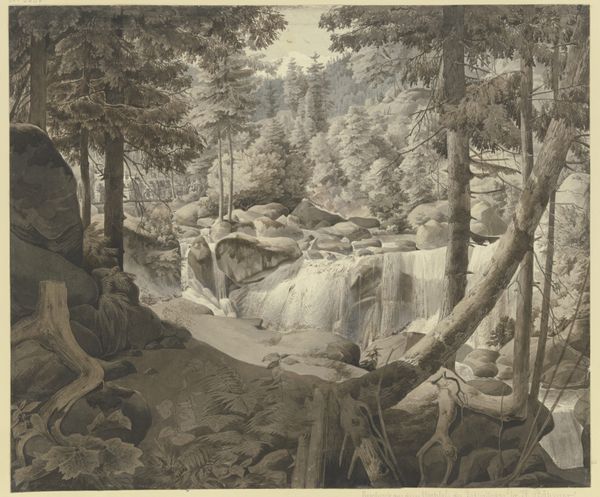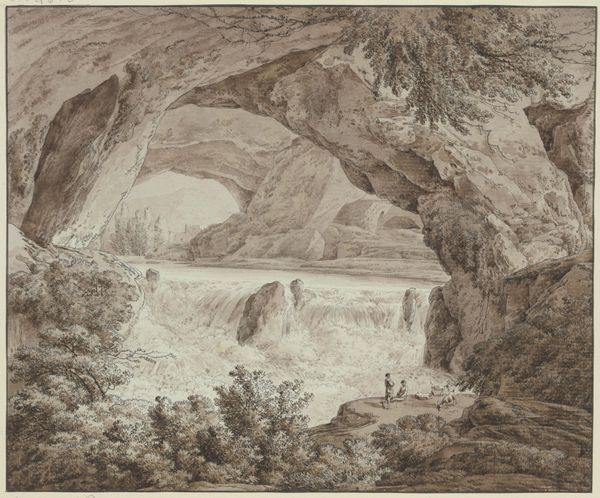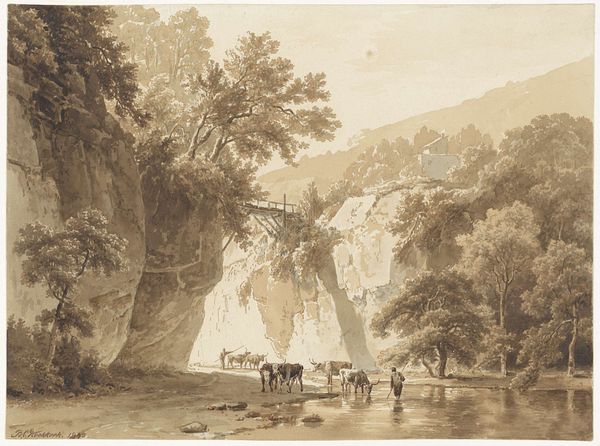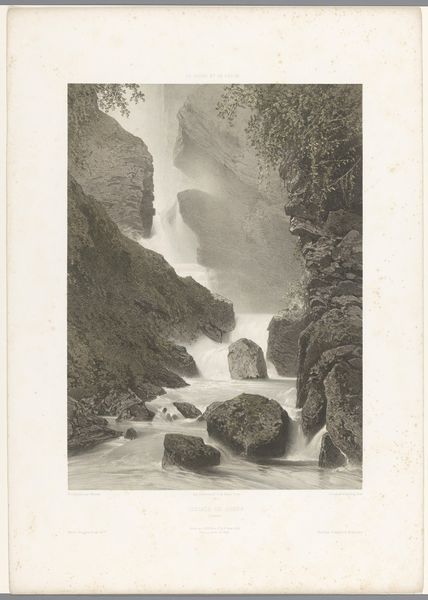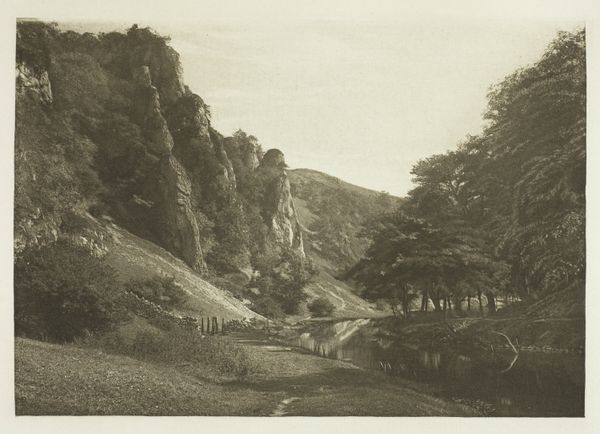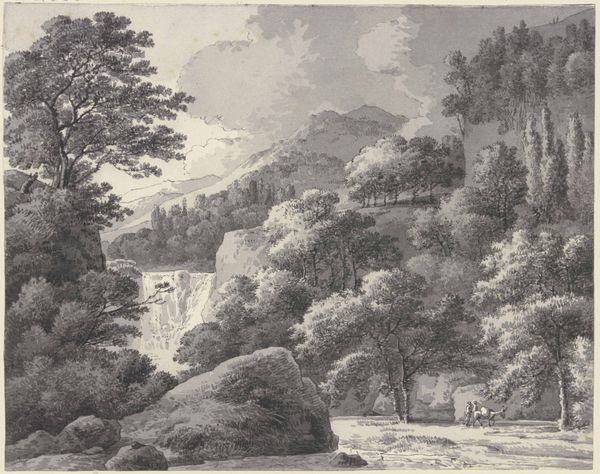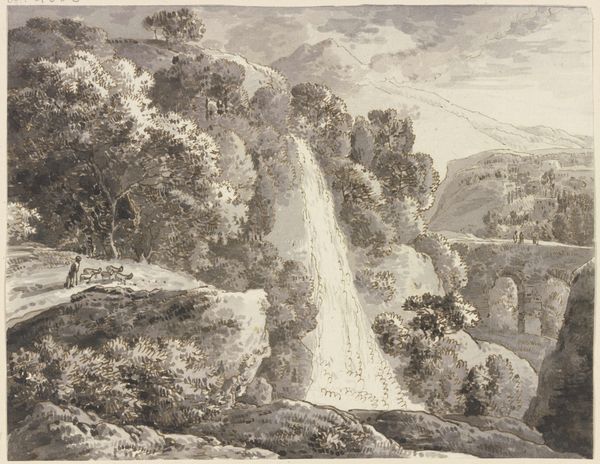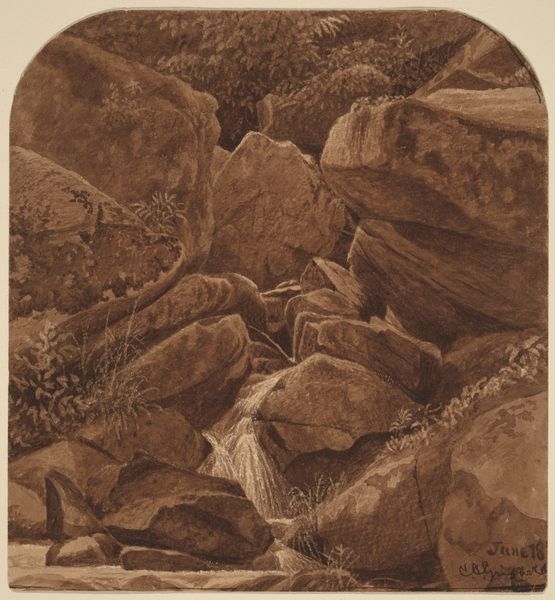
L'Orido a Bellano sul Lago di Como (The Orrido di Bellano near Lake Como) c. 1805
0:00
0:00
drawing
#
drawing
#
landscape
#
romanticism
#
line
#
watercolor
Dimensions: sheet: 50.2 × 69 cm (19 3/4 × 27 3/16 in.) mount: 51.7 × 70.2 cm (20 3/8 × 27 5/8 in.)
Copyright: National Gallery of Art: CC0 1.0
Editor: This is "L'Orido a Bellano sul Lago di Como" by Peter Birmann, circa 1805, a drawing in sepia watercolor. The overwhelming feeling is of depth created through line and shading. The sepia tones unify the craggy rocks, rushing water, and lush vegetation into a cohesive whole, but where does that dynamism arise from? Curator: The dynamism is inherent within the line. Observe how Birmann employs line to delineate form and texture, but most importantly, space. Note the stark contrasts in value that articulate recession. Do you see how the density of lines increases in the foreground and gradually decreases as it recedes into the distance? The interplay of light and shadow constructs volume, shaping our perception of the artwork and defining its various planes. Editor: Yes, I see it. The details in the foreground—the wooden structures, the texture of the rocks—are incredibly defined. Further back, everything softens, almost fades. So the contrast becomes a mechanism for drawing us into the image, structuring our perception and engagement with the work. Curator: Precisely. The lines establish a hierarchy of visual information, which in turn shapes our sensory experience of the depicted landscape. The consistent tonal range unifies these observations into an intense, evocative encounter, where all the representational components become subsumed under a visual impression. Editor: I understand now! The carefully calibrated deployment of line and the layering of shades shapes the work’s sense of depth and, therefore, our experience of viewing it. Thanks so much! Curator: An insightful reading. Studying the structural elements, allows a deeper engagement with how the piece as a whole functions aesthetically and intellectually.
Comments
No comments
Be the first to comment and join the conversation on the ultimate creative platform.
